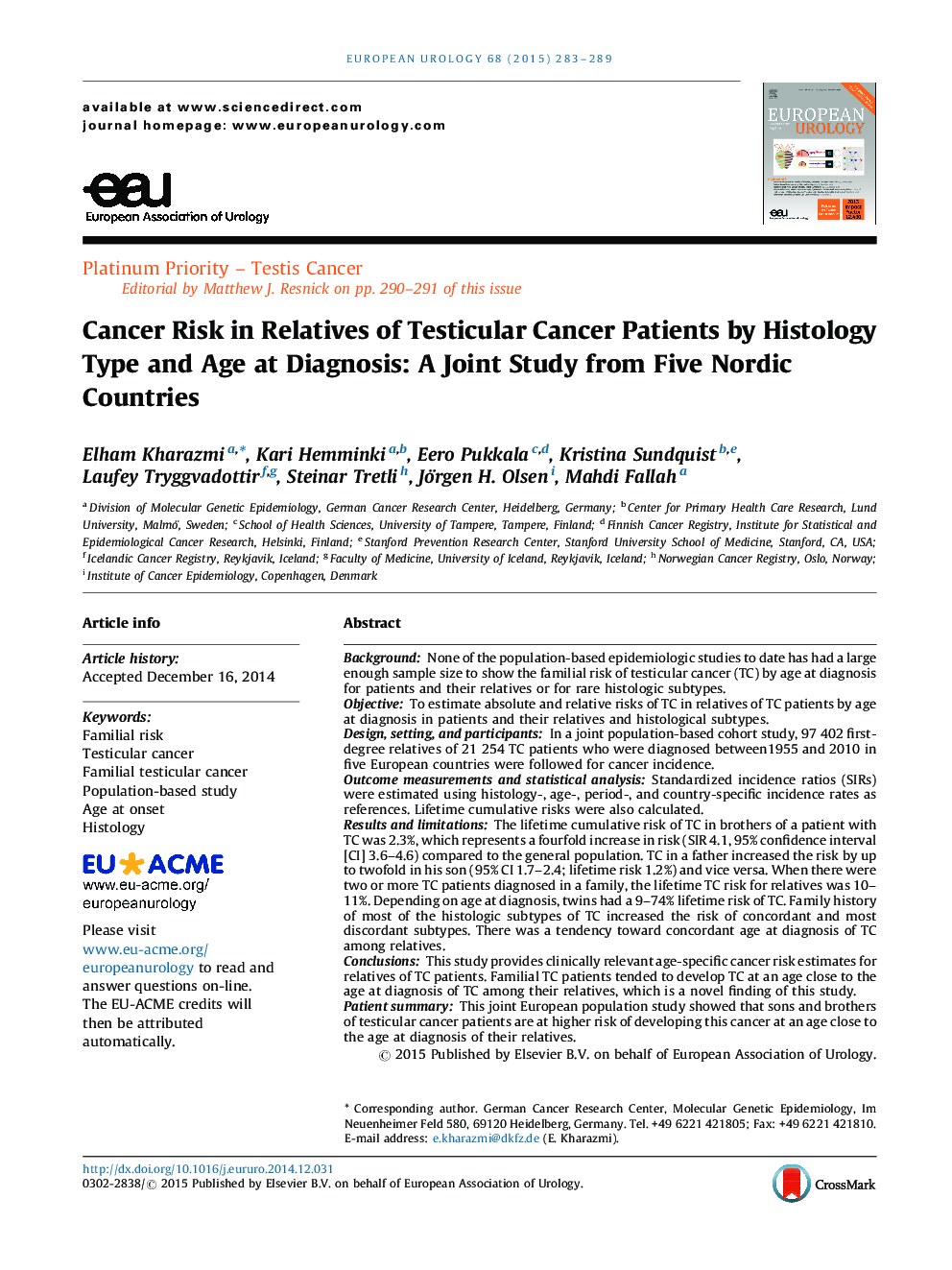| Article ID | Journal | Published Year | Pages | File Type |
|---|---|---|---|---|
| 6176484 | European Urology | 2015 | 7 Pages |
BackgroundNone of the population-based epidemiologic studies to date has had a large enough sample size to show the familial risk of testicular cancer (TC) by age at diagnosis for patients and their relatives or for rare histologic subtypes.ObjectiveTo estimate absolute and relative risks of TC in relatives of TC patients by age at diagnosis in patients and their relatives and histological subtypes.Design, setting, and participantsIn a joint population-based cohort study, 97Â 402 first-degree relatives of 21Â 254 TC patients who were diagnosed between1955 and 2010 in five European countries were followed for cancer incidence.Outcome measurements and statistical analysisStandardized incidence ratios (SIRs) were estimated using histology-, age-, period-, and country-specific incidence rates as references. Lifetime cumulative risks were also calculated.Results and limitationsThe lifetime cumulative risk of TC in brothers of a patient with TC was 2.3%, which represents a fourfold increase in risk (SIR 4.1, 95% confidence interval [CI] 3.6-4.6) compared to the general population. TC in a father increased the risk by up to twofold in his son (95% CI 1.7-2.4; lifetime risk 1.2%) and vice versa. When there were two or more TC patients diagnosed in a family, the lifetime TC risk for relatives was 10-11%. Depending on age at diagnosis, twins had a 9-74% lifetime risk of TC. Family history of most of the histologic subtypes of TC increased the risk of concordant and most discordant subtypes. There was a tendency toward concordant age at diagnosis of TC among relatives.ConclusionsThis study provides clinically relevant age-specific cancer risk estimates for relatives of TC patients. Familial TC patients tended to develop TC at an age close to the age at diagnosis of TC among their relatives, which is a novel finding of this study.Patient summaryThis joint European population study showed that sons and brothers of testicular cancer patients are at higher risk of developing this cancer at an age close to the age at diagnosis of their relatives.
